site search
online catalog
LARGE GROUP ID’D TO 44TH MASSACHUSETTS SOLDIER – PRE- & POST-WAR SERVICE
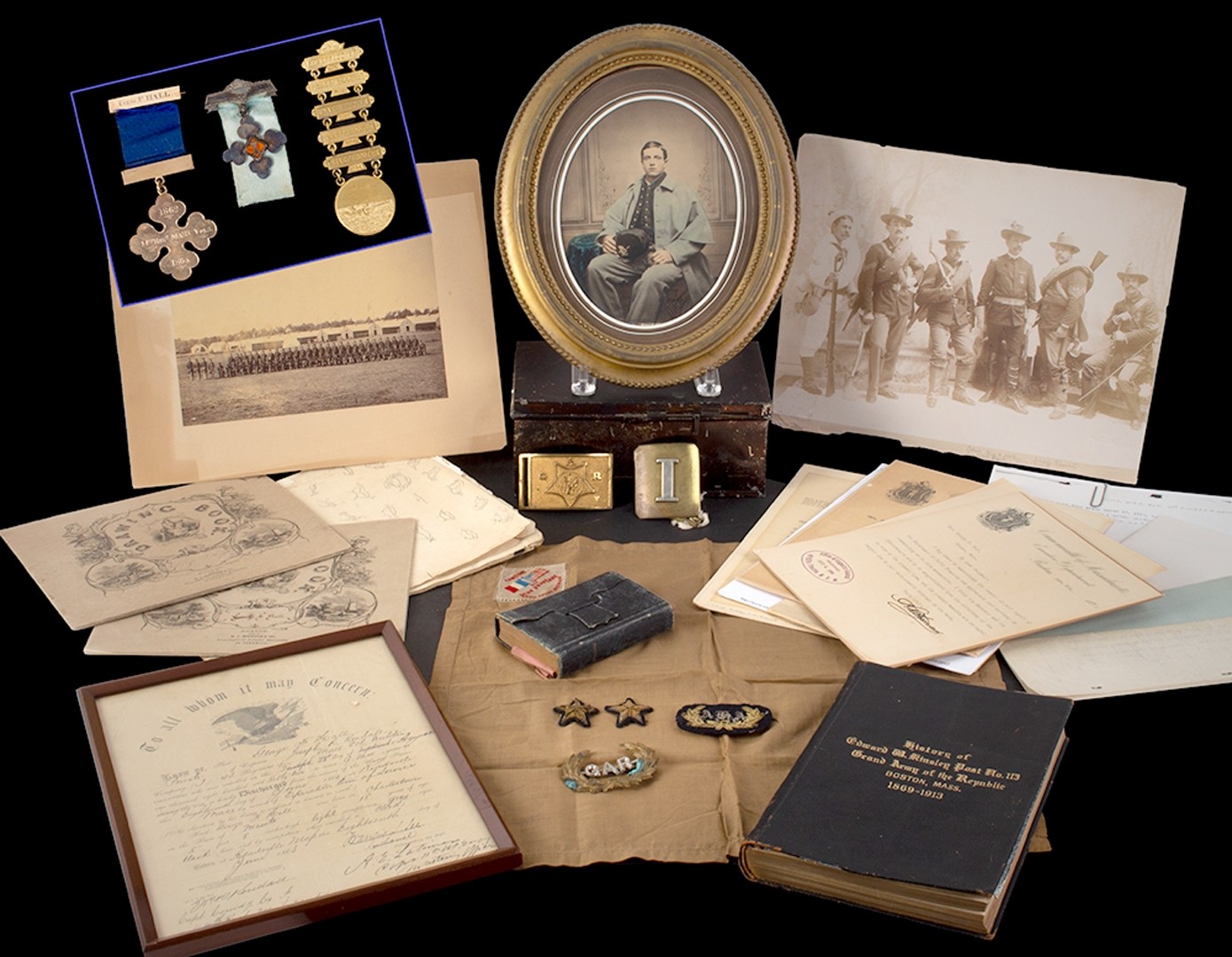
Hover to zoom

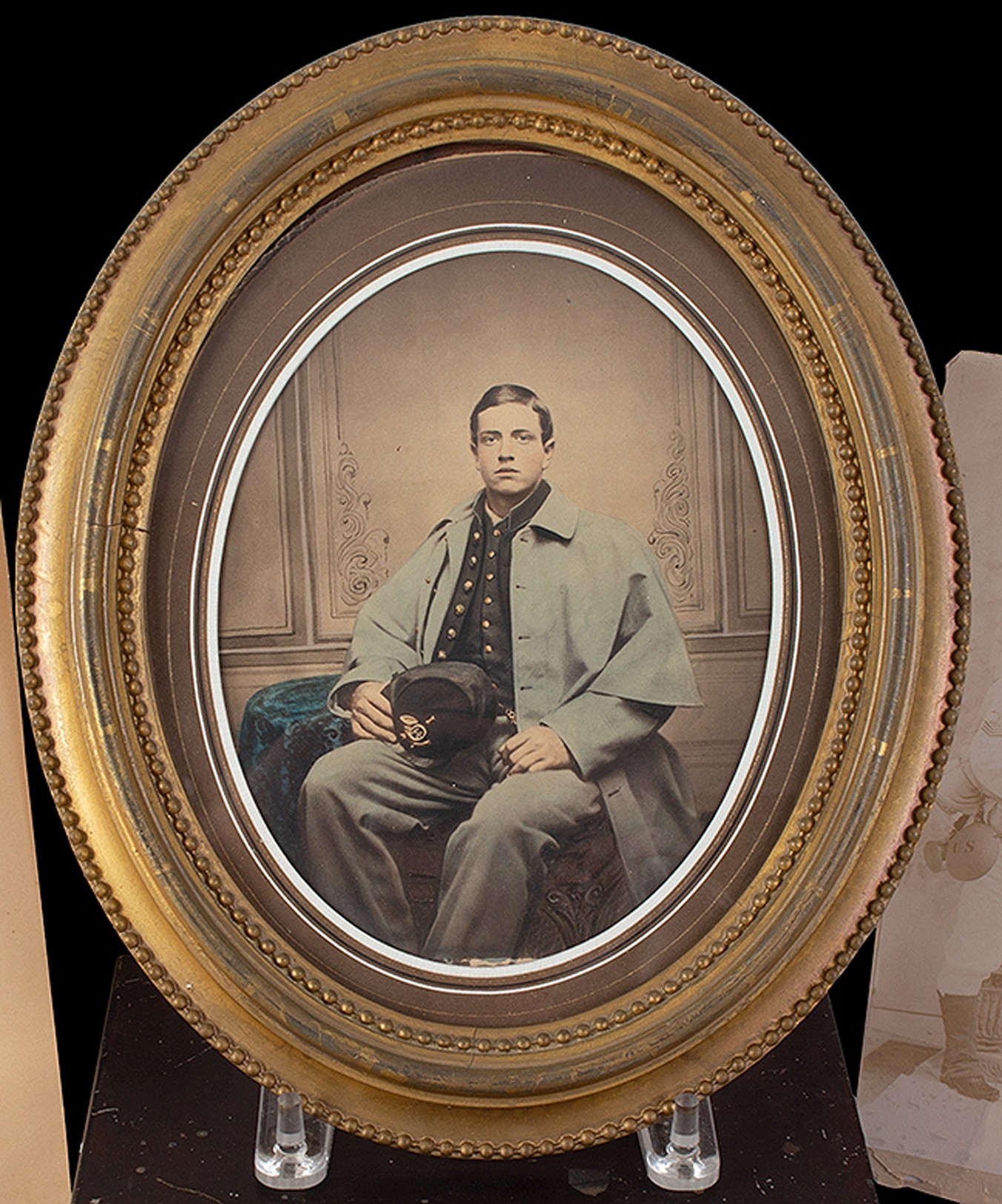
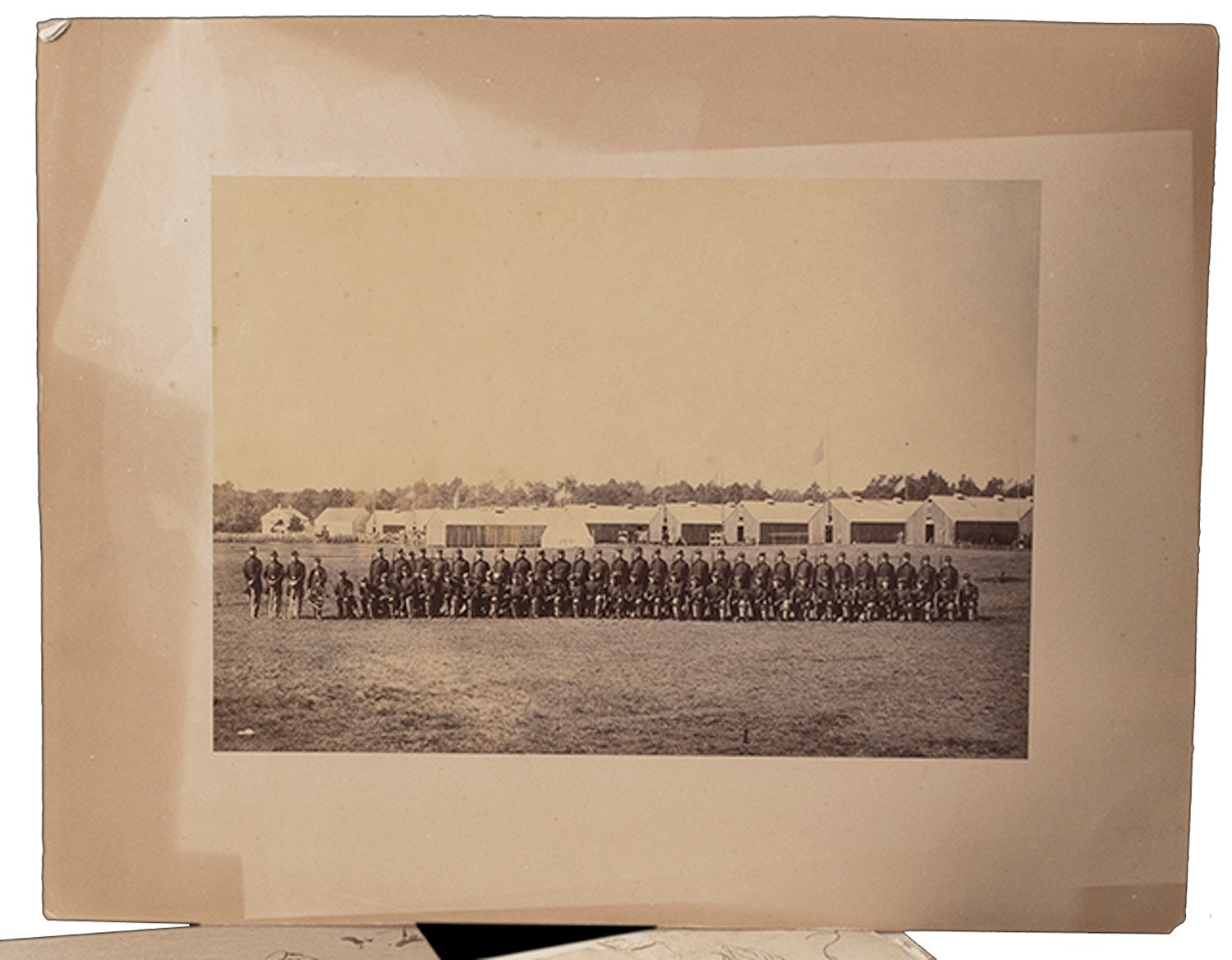
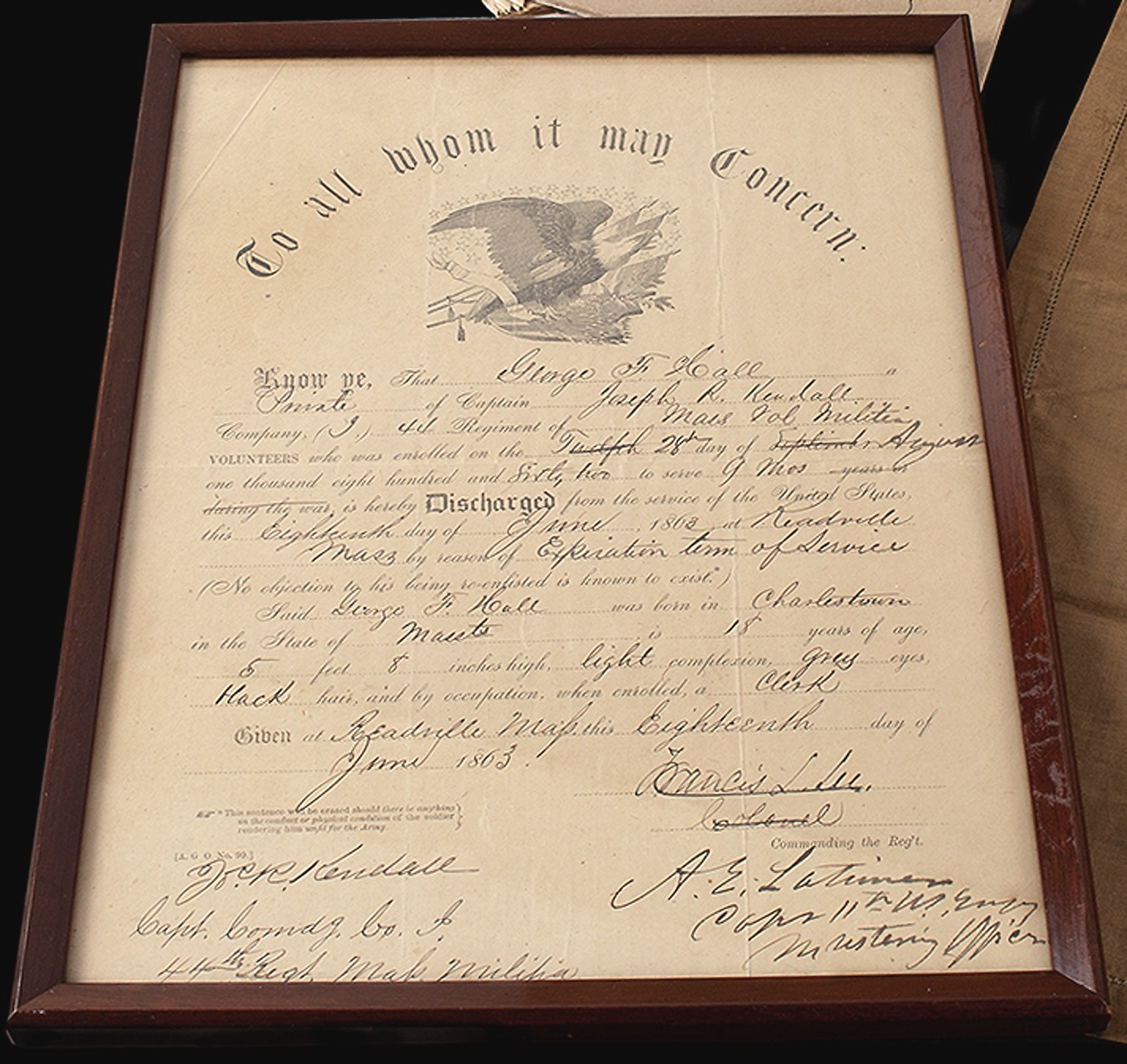
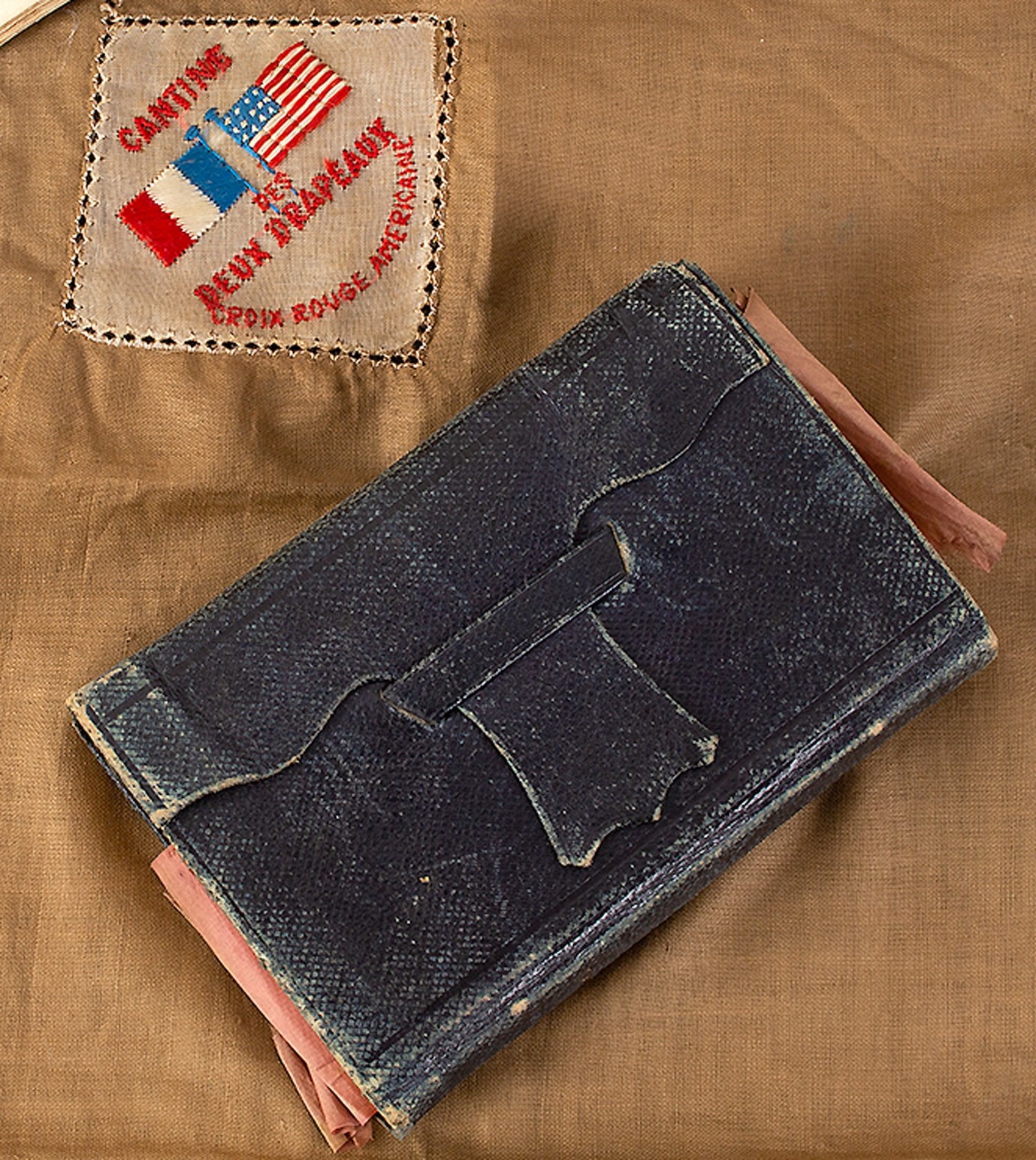
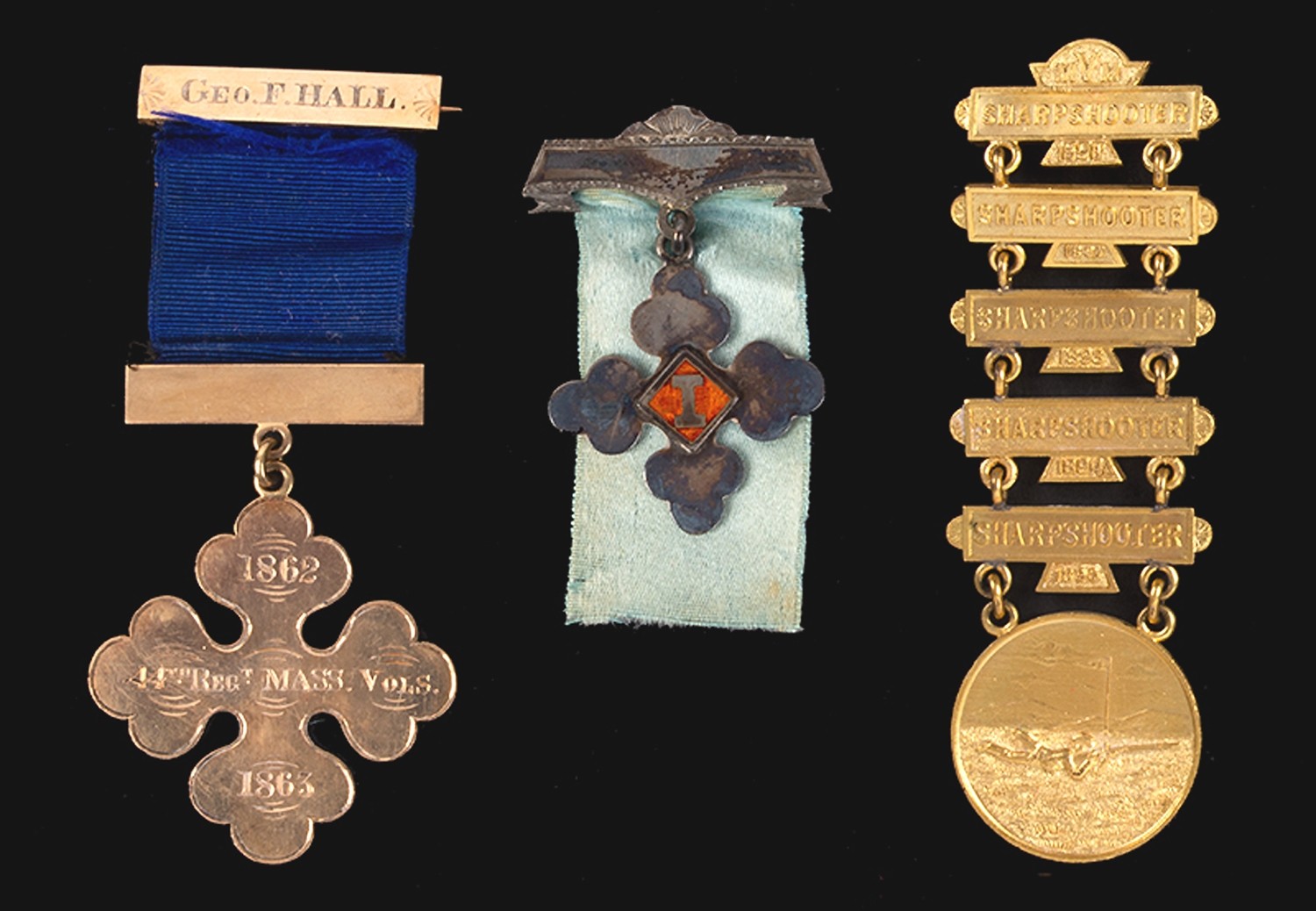
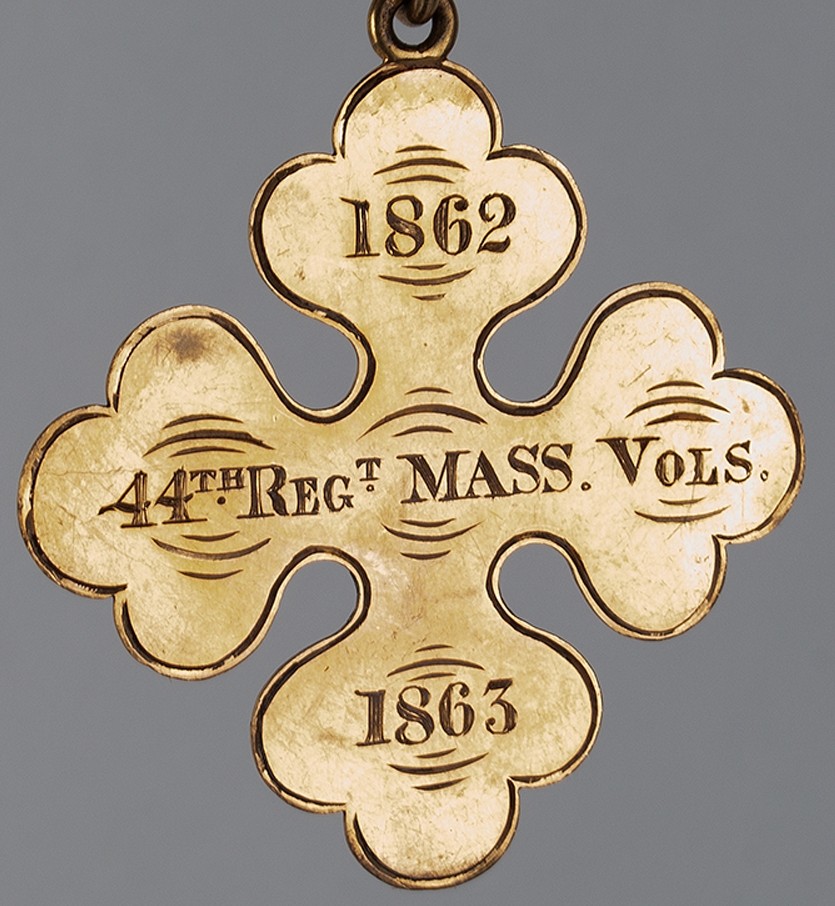
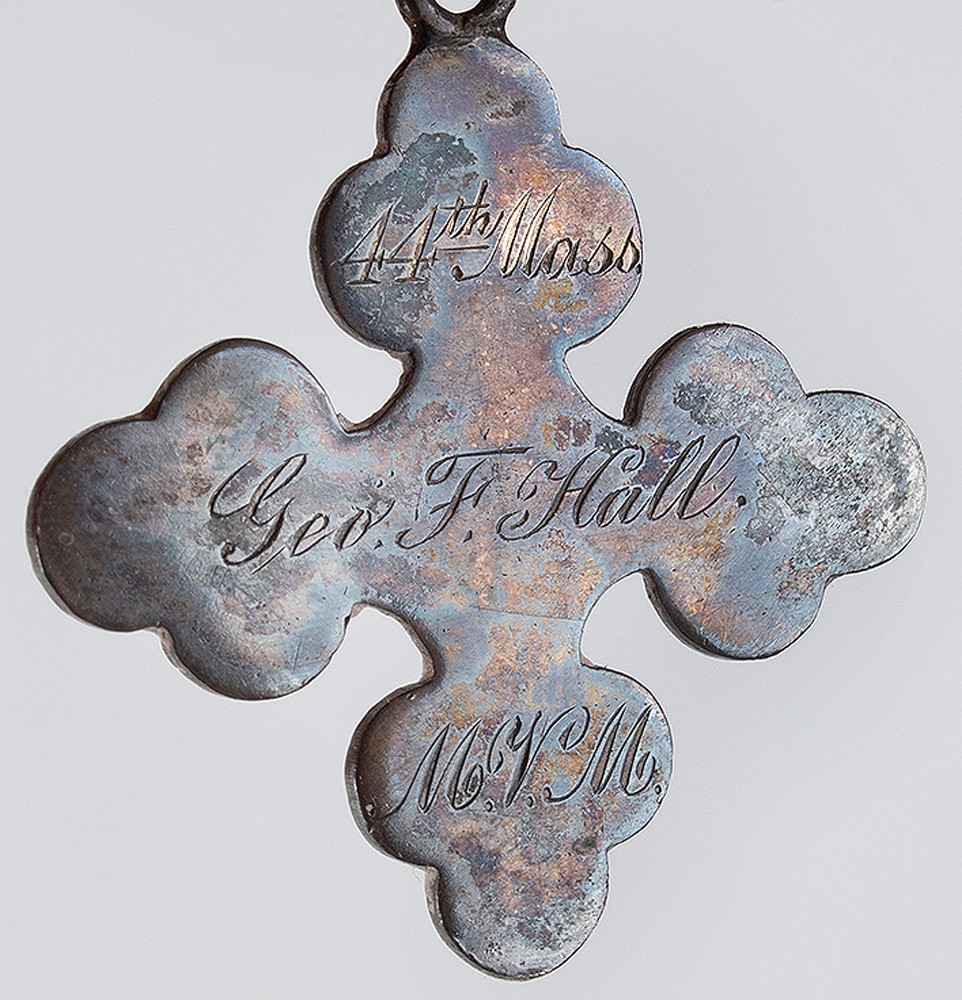
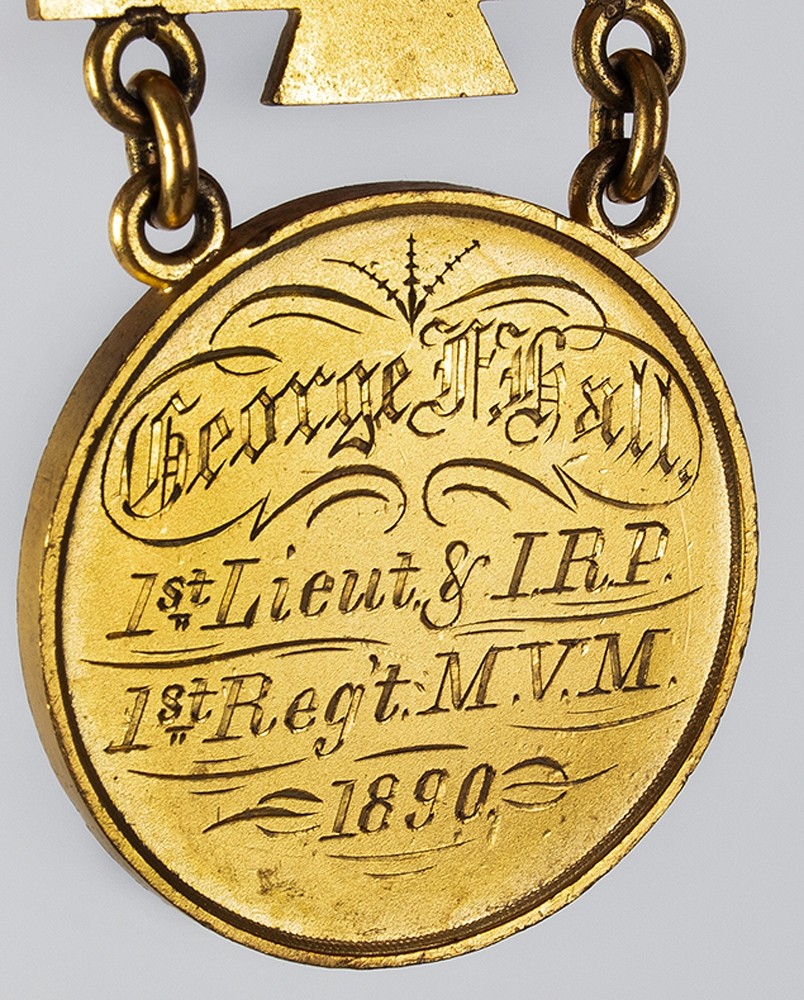
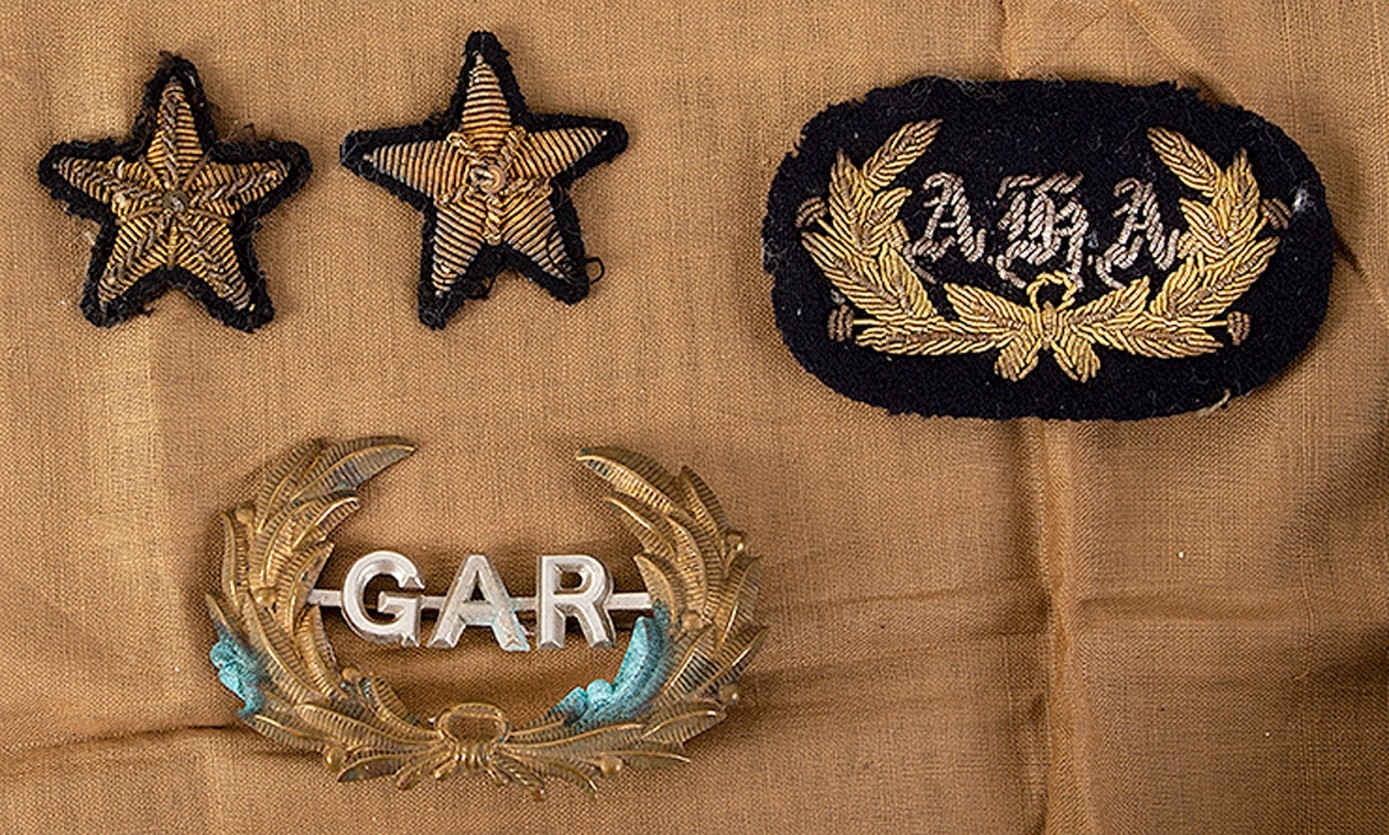
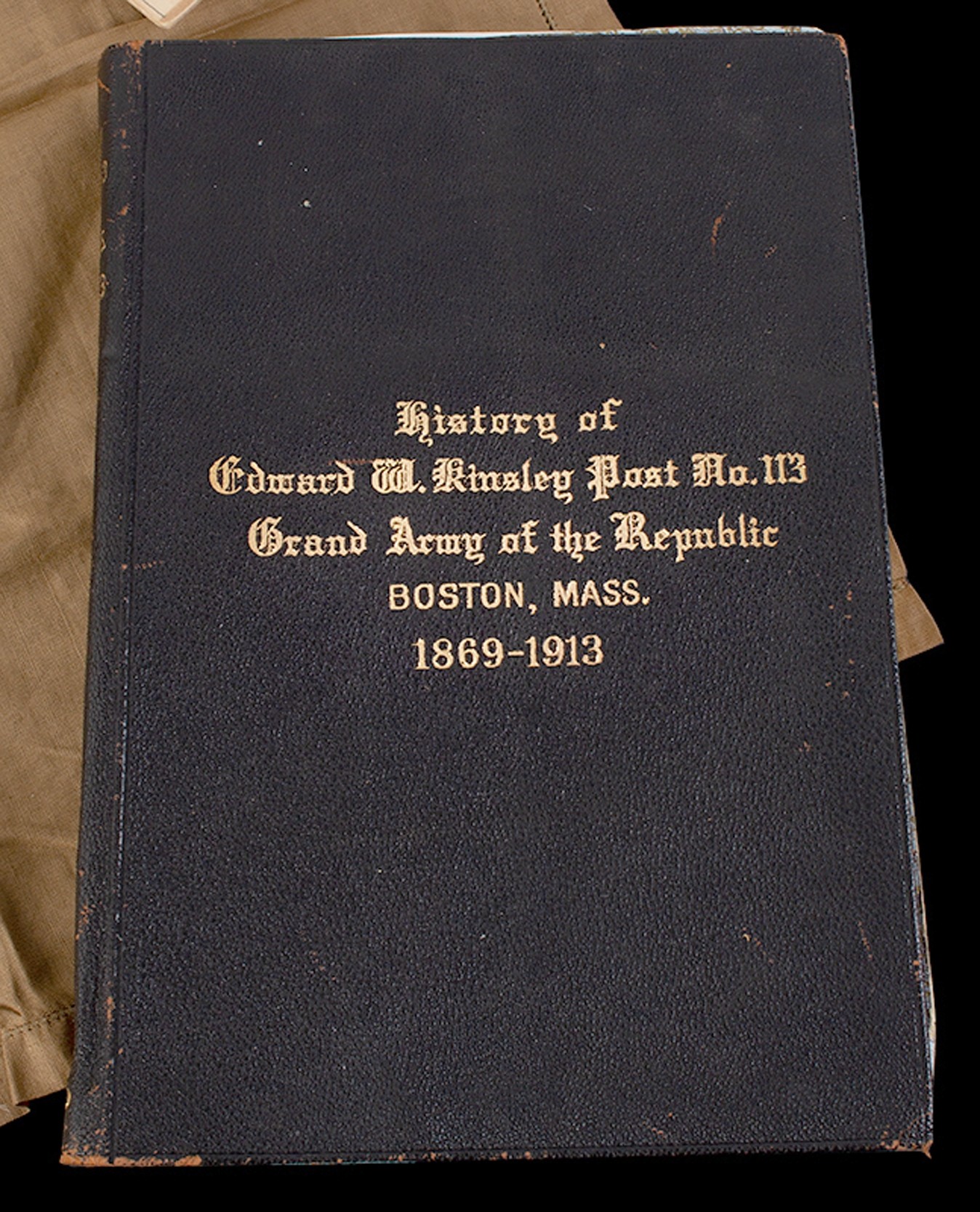
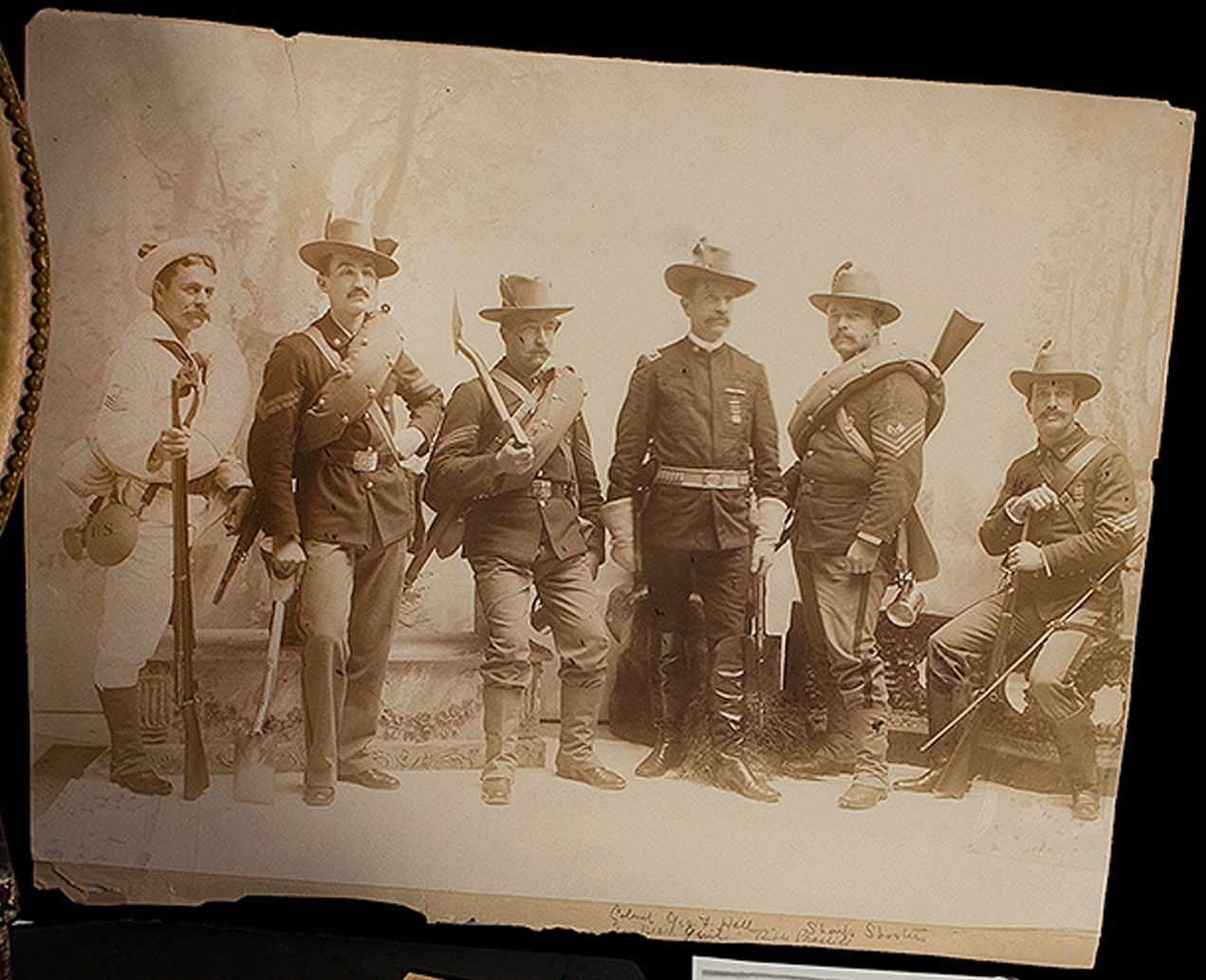
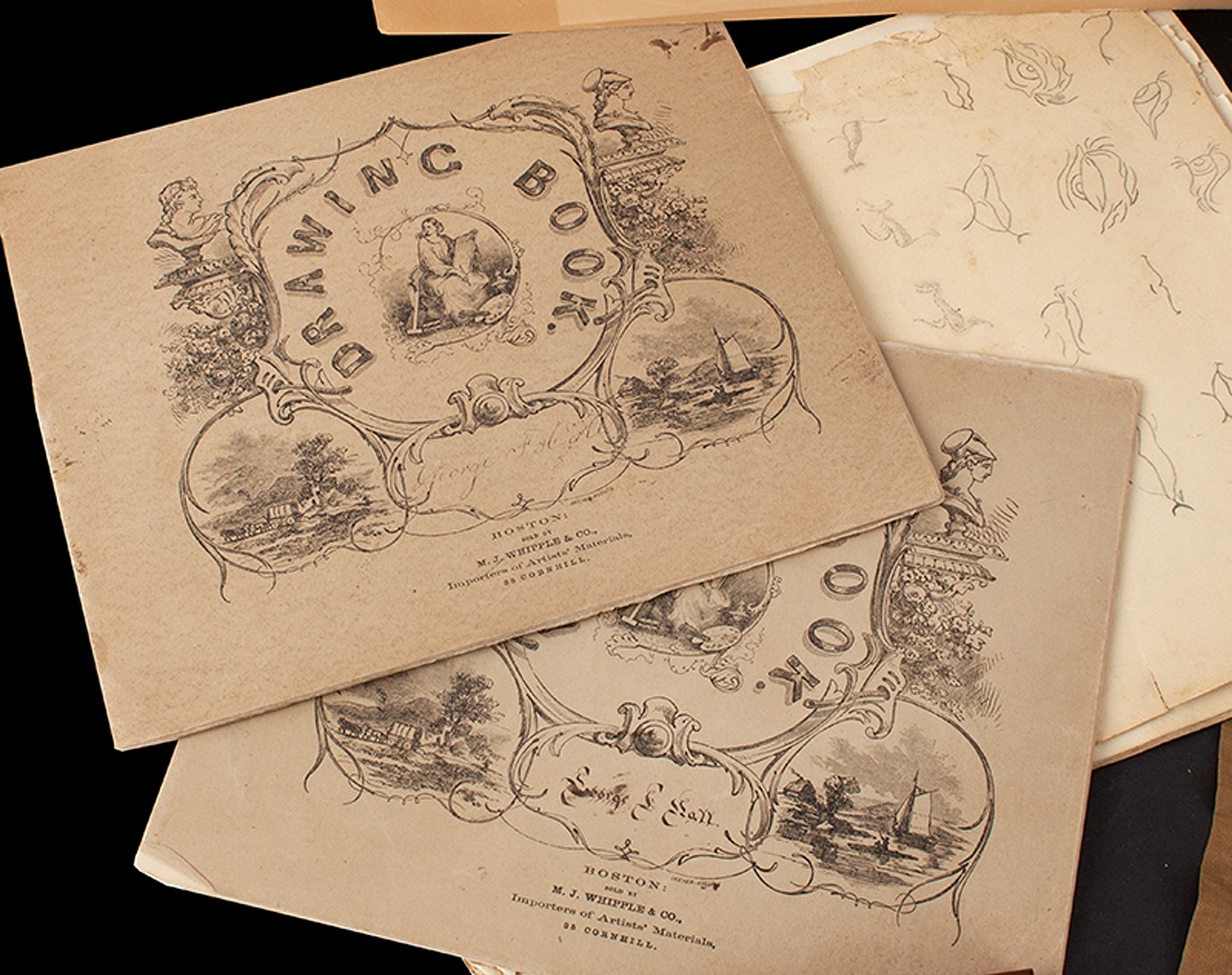
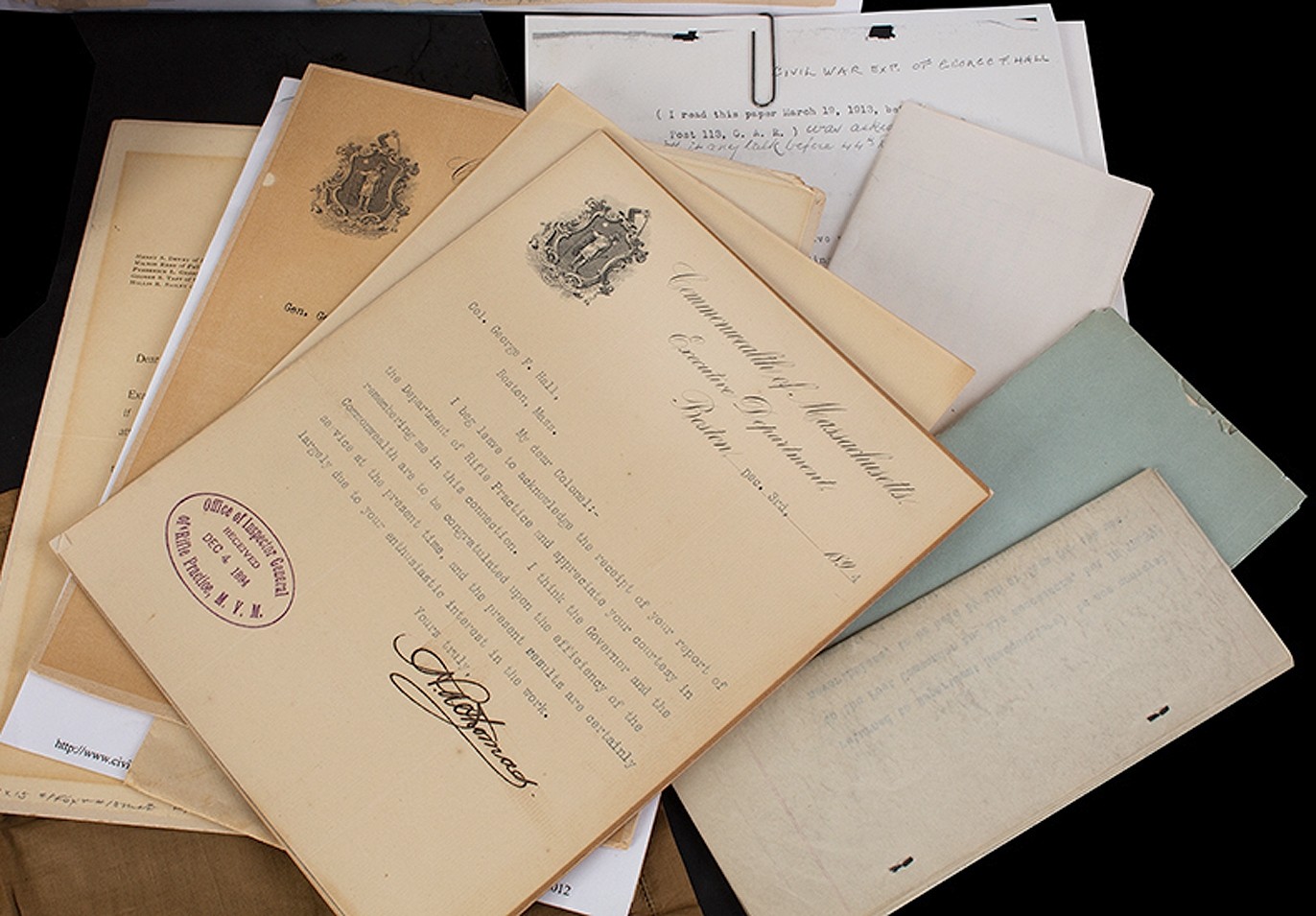
$6,500.00
Quantity Available: 1
Item Code: 30-2204
The group of items offered here belonged to George F. Hall of Charlestown, Massachusetts who served nine-months with the 44th Massachusetts Infantry. As will be seen, George also served for a short time before the war in a local militia and for quite a while after the war in state service.
George Franklin Hall was born July 31, 1844 in Charlestown, Massachusetts. George’s father, Charles S. Hall, was a supporter of abolitionist John Brown and is given partial credit for composing the wartime song “John Browns Body (Lies A Moldering In The Grave.”)
In the late 1850’s George Hall joined a group of about fifty or sixty other boys between the ages of 14-16 and formed the “Charlestown Cadets.” They met evenings in a rented hall and were drilled by a Captain Pray of the “Charlestown City Guards” which was one of the towns “crack militia organizations.” To add inspiration to the boy’s discipline Captain Pray sometimes drilled them on the nearby Bunker Hill battlefield under the shadow of the monument commemorating that famous battle.
Hall was also a member of the “WIDEWAKES” and marched in several parades through the Democratic section of town which he said “…meant trouble, the possible loss of hat and cape, the smashing or loss of lantern, and even injuries.”
With the start of the Civil War, Hall felt the urge to enlist but being only 17 could not secure his parents’ permission. However, in a compromise, he was allowed to take passage on a steamer to Baltimore by way of Fortress Monroe. After arriving at the fortress Hall took a side trip to Newport News on an armed side-wheeler carrying General Ben Butler. On the return trip the side-wheeler headed for Norfolk where Butler spotted a new Confederate earthwork. Once in range Butler ordered the single rifled gun in the bow to fire. It was here that Hall heard his first shot fired in anger. The Confederates made no reply and the boat returned safely to Fortress Monroe.
After a few adventures in Baltimore Hall returned home where he would remain until he turned 18 in July of 1862. Taking a job as a clerk, Hall still felt the pull of the Army and on August 28, 1862 he enlisted as a private in Company I, 44th Massachusetts Infantry to serve nine months.
Hall and the 44th were assigned to the 18th Corps of the Department of North Carolina. Once settled in at New Bern the 44th took part in a march to Tarboro where they were engaged in their first action losing 2 killed and 12 wounded. In this fight Hall’s Company I was second in the line of advance and traded a few rounds with the Confederates near dark. During this action Hall was struck on the bridge of his nose and knocked to the ground by either a spent ball or shell fragment. As he rose Hall “…tasted and felt a warm hemorrhage from my nose, but could feel no extra openings in my head.” The next morning Hall had two black eyes and a swollen nose and in this condition was detailed to bury the dead.
Upon the return of the 44th to New Bern Hall was assigned to the regimental band and missed the expedition that resulted in actions at Kinston, Whitehall and Goldsboro and the loss of 591 men.
Hall next took part in the relief of Washington, North Carolina where is regiment lost 3 wounded and 3 captured.
The 44th was returned to Massachusetts in June of 1863 and mustered out on the 18th.
After his service Hall retuned home and took up his old job as a clerk. In 1868 he married Mary E. Coleman. Over the years the couple would raise one daughter and 3 sons.
The records of George Hall’s state service are sketchy. He was made 1st lieutenant and Inspector of Rifle Practice for the 1st Regiment Massachusetts State Militia on November 8, 1889 and in November of 1893 was accepted as an associate member of the Military Service Institution of the United States.
In 1894 Lieutenant Hall was appointed to the staff of Governor Frederic T. Greenhalge as colonel and Inspector General of Rifle Practice and in 1897 he was appointed a brigadier general in the Massachusetts State Militia.
Also during this time Hall studied law and was admitted to the Massachusetts Bar in 1901.
If not busy enough with his militia duties and law studies, Hall was also a lifelong member of the Edward W. Kinsely Post #113 of the GAR holding several offices to include Post Sr. Vice-Commander, Department of Massachusetts Judge-Advocate, Post Commander and Post Council of Administration.
George F. Hall died in Hull Massachusetts on March 1, 1915 and is buried in Mount Auburn Cemetery, Cambridge.
Having told you about the man we will now look at the items he has left to posterity.
First is a large framed oval colored albumen image of Hall in uniform. This wonderful photo shows Hall seated by a table holding his forage cap in his lap. The crown of the cap faces the camera and clearly seen on the dark blue crown is a brass infantry hunting horn with very clear brass regimental number “44” at center. Above this is a brass Company letter “I.” Halls face has a light skin tone with lightly tinted cheeks. He wears a sky-blue overcoat with turned down collar over an open dark blue frock coat with brass buttons and a matching blue military vest which is buttoned up with a nice row of brass buttons running down the front. He also wears sky-blue trousers. Image contrast and clarity are outstanding. The photo is housed in the original gilt painted Victorian wood frame with new mat of brown with gold accent. Reverse has a wood panel holding the iage in place. Wood panel has modern ink ID that reads “GEORGE F. HALL 1844-1915 CIVIL WAR UNIFORM.” Including the frame the image meas. approx. 10.25 x 12.25 inches.
Present with the group is another albumen. This one meas. approx. 13.25 x 10.25 inches and is unframed. It shows a company of infantry drawn up in line of battle in a field in front of a row of wooden barracks with each building supporting a flag pole. Several have flags flying. The men all wear frock coats and forage caps and what look like English accouterments which the 44th Massachusetts was known to have. The front rank is kneeling with their rifles with fixed bayonets held in a position of “Defense against cavalry” while the rear rank is at “Shoulder Arms.” The three Company officers are at left (the company’s right) with swords drawn and standing at “Parade Rest.” They are accompanied by the drummer. Image has excellent clarity and contrast but the mount shows discoloration caused by exposure to the sun. Fortunately something was stored over the top of the image proper and saved it from any discoloration. Reverse has modern pencil inscription that reads “44TH REGIMENT TRAINING TO GO TO CIVIL WAR. COM I (?) GEO. F. HALL IN PICTURE.” There is no doubt that this is Company I of the 44th. However it is not known if the picture was taken at Readville, Massachusetts during training or at New Bern, North Carolina. At both places the regiment stayed in barracks.
The group also contains Hall’s eagle masthead discharge from the 44th dated June 18, 1863 and signed by Colonel Francis L. Lee and Company I Commander Joseph R. Kendall. Framed the document meas. approx. 9.00 x 11.50 inches. Frame looks to be the original and still has the original paper label on the reverse for a Boston framer. Document is in excellent condition with one faint horizontal and two faint vertical fold lines. All period ink is strong.
Next in the group is a wonderful 1861 dated pocket testament given to Hall by his mother. What makes this a touching piece is that pasted inside is a CDV of George Hall’s mother, Harriet Solis Hall. The testament is in excellent condition. The leather exterior is perfect and complete with the folding flap and tab. Stamped in slightly worn gold on the spine is “TESTAMENT.” Inside the front cover is Hall’s father’s name and business address in period pencil. On the page across from this is another period pencil inscription of “GEORGE F. HALL, CHARLESTOWN, MASS. 44th REG. CO. I MASS VOL” done in a decoratively flowing hand. Turning the next page reveals a CDV of Hall’s mother seated by a table wearing a light dress with dark buttons down the front of her bodice and horizontal dark stripes around the bottom of her skirt. Around her shoulders is a dark shawl with a white spotted or flowered border. Image has excellent clarity and contrast. Turning the next page we find a period ink inscription in the mother’s hand “GEORGE FRANKLIN HALL FROM MOTHER.” The testament is dated 1861 and was published by the American Bible Society of New York. Tucked inside the book is a homemade bookmark made of a piece of red ribbon with the figure of a Revolutionary war soldier with upraised arm holding a sword in one hand and in the other is a US flag on a staff. This artwork looks to have been cut from a patriotic envelope of the period and glued to the ribbon. No doubt it was made by George’s mother. Ribbon shows slight wear along the bottom.
Two medals relating to Hall’s service with the 44th are also present in the group. The first looks to be a wartime silver medal with a top bar in the shape of a plain riband with a notched border and a lined clamshell at top. Reverse has a “T” shaped pin. Suspended from this is a silver 18th Corps badge with a red enameled diamond at center with a letter “I” at center of the diamond. The reverse of the Corps badge is engraved “GEO. F. HALL” across the center with “44th MASS” above it and “M.V.M.” below. A sky-blue ribbon approx. 2.00 inches long hung behind the badge. The ribbon has separated but is present. Badge is slightly tarnished from age
The second medal looks to be a veteran’s medal. The top bar is gold plated and is engraved “GEO. F. HALL” and has the original pin on the reverse. Suspended from this is a 1.00 inch dark blue ribbon that is frayed at center. The ribbon holds a plain gold plated bar that in turn holds an 18th Corps badge of similar composition engraved with “1862-1863 44th REGT MASS VOLS.”
A third medal in the group dates from Hall’s time in the state militia. The medal is made of brass and holds five “SHARPSHOOTER” bars with dates for 1890, 92, 93, 94 and 96.” The top bar is surmounted by the initials “M.V.M” for Massachusetts Volunteer Militia and has the pin on the reverse. All the bars are held together by a single chain link and at bottom is a circular drop with a scene of a prone soldier in a field aiming his rifle. In the background is a flag on a pole. The reverse of the drop is very nicely engraved with “GEORGE F. HALL, 1ST LIEUT & I.R.P. 1ST REGT M.V.M. 1890.” Medal is in immaculate condition.
Among the GAR items in the group is Hall’s rectangular brass GAR sword belt plate complete with tongue on reverse, a pin back stamped brass wreath hat insignia with white metal “GAR” at center and a clipped corner brass plate with white metal “I” at center. Plate has tongue on the reverse and comes with a keeper.
There is also a bound history of the Edward Kinsley Post 113 of the GAR from 1869 to 1913. Volume is bound in black leather with the title in old on the front cover and spine. Pages are gold edged. Binding is excellent. Volume runs 420 pages and covers Hall’s time as Post Commander.
Items relating to Hall’s post war military service are also present.
There is a japanned tin box with working lid and latch. Box meas. approx. 8.50 x 5.25 x 3.75 inches and is in excellent condition.
There is also a pair of stars made of gold bullion thread with a black felt backing, a cloth hat insignia of a gold bullion thread wreath with letters “AKA” done in silver thread at center all on a black felt backing, a khaki handkerchief embroidered with US and French flags and a French inscription for the Red Cross.
Also part of the group is a very nice oversized image that meas. approx. 14.50 x 11.00 inches and shows Hall in uniform as a colonel wearing the shooting medal described earlier and posed with three sergeants, a corporal and a sailor. All except Hall and one of the sergeants wears a blanket roll. All the enlisted men carry carbines while Hall is armed only with a pistol and the sailor carries a rifle. The very bottom of the mount has a period pencil inscription of COLONEL GEO. F. HALL, INSPECTOR GENERAL RIFLE PRACTICE SHARPSHOOTERS.” Image is in very nice condition but the mount edges are worn.
This large group also contains three sketchbooks containing drawings done by Hall. None are military. Most are architectural or landscapes as well as several studies of the human arm, hand or eye.
There are also several documents present to include letters of appointment signed by Governors Greenhalge and Wolcott.
One of the last pieces is a Xerox copy of an 18 page typed document written by Hall telling of his service with the 44th Massachusetts.
This is a wonderful group of items relating the interesting story of one Massachusetts volunteer. [AD]
~~~~~~~~~~~~~~~~~~~~~~~~~~~~~~~~~~~
THIS ITEM, AS WITH ALL OTHER ITEMS AVAILABLE ON OUR WEB SITE,
MAY BE PURCHASED THROUGH OUR LAYAWAY PROGRAM.
FOR OUR POLICIES AND TERMS,
CLICK ON ‘CONTACT US’ AT THE TOP OF ANY PAGE ON THE SITE,
THEN ON ‘LAYAWAY POLICY’.
THANK YOU!
Inquire About LARGE GROUP ID’D TO 44TH MASSACHUSETTS SOLDIER – PRE- & POST-WAR SERVICE
Most Popular
Historical Firearms Stolen From The National Civil War Museum In Harrisburg, Pa »
Theft From Gravesite Of Gen. John Reynolds »
Selection Of Unframed Prints By Don Troiani »
Fine Condition Brass Infantry Bugle Insignia »
Large English Bowie Knife With Sheath 1870’S – 1880’S »
Imported (Clauberg) Us Model 1860 Light Cavalry Officer's Saber »
featured item
DECEMBER 1862 LETTER WRITTEN BY COL. JOSHUA LAWRENCE CHAMBERLAIN TO HIS WIFE FANNY
Here we have a letter written by a man who needs no introduction, Joshua Lawrence Chamberlain. This four-page letter is written on standard 8.5 inch by 11 inch unlined paper. In period ink, Chamberlain writes to his wife, Fanny, from the camp of the… (557-250B). Learn More »


